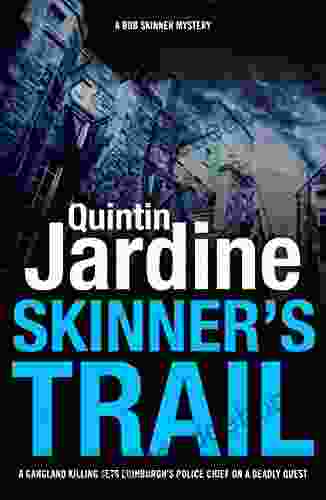Biofilm Pilonidal Cysts and Sinuses: Recent Clinical Techniques, Results, and Long-term Outcomes

Pilonidal cysts and sinuses are chronic, often debilitating conditions that can significantly impact a patient's quality of life. These lesions are characterized by the presence of a cyst or sinus tract located in the natal cleft, which is the crease between the buttocks. The formation of biofilm, a complex community of microorganisms embedded in a protective matrix, plays a crucial role in the persistence and recurrence of these lesions.
Biofilm and Pilonidal Cysts
Biofilm is a complex and highly organized structure that adheres to the surface of foreign bodies or tissues, forming a protective layer. In the case of pilonidal cysts and sinuses, biofilm consists of a dense accumulation of bacteria, including Staphylococcus aureus, Escherichia coli, and Pseudomonas aeruginosa. The presence of biofilm in these lesions creates a chronic inflammatory environment, hindering the healing process and increasing the risk of recurrence.
5 out of 5
| Language | : | English |
| File size | : | 32520 KB |
| Text-to-Speech | : | Enabled |
| Screen Reader | : | Supported |
| Enhanced typesetting | : | Enabled |
| Print length | : | 589 pages |
| X-Ray for textbooks | : | Enabled |
Recent Clinical Techniques
Over the years, various clinical techniques have been developed to address pilonidal cysts and sinuses and combat the challenges posed by biofilm. These techniques aim to remove the biofilm, eradicate the infection, and prevent recurrence.
Biofilm Debridement
Biofilm debridement involves the physical removal of the biofilm from the affected area. This can be achieved through various methods, such as curettage, laser therapy, or ultrasound. By removing the biofilm, the underlying infection can be more effectively treated, and the healing process can be facilitated.
Antimicrobial Therapy
Antimicrobial therapy plays a crucial role in combating the bacterial infections associated with pilonidal cysts and sinuses. Antibiotics are typically administered to target the specific bacteria identified in the biofilm. However, it is important to use antibiotics judiciously to avoid the development of antibiotic resistance.
Wound Care
Proper wound care is essential for promoting healing and preventing infection in pilonidal cysts and sinuses. This includes regular wound cleaning, debridement of necrotic tissue, and the application of dressings that promote healing. Advanced wound care techniques, such as negative pressure wound therapy, can also be used to accelerate the healing process.
Surgical Intervention
In some cases, surgical intervention may be necessary to treat pilonidal cysts and sinuses. The surgical approach depends on the severity and extent of the lesions. Techniques such as excision and closure, flap reconstruction, or marsupialization may be employed to remove the cyst and prevent recurrence.
Results and Long-term Outcomes
The results and long-term outcomes of clinical techniques for pilonidal cysts and sinuses vary depending on the severity of the lesions, the presence of biofilm, and the specific technique used. However, studies have shown that a combination of biofilm debridement, antimicrobial therapy, wound care, and, when necessary, surgical intervention can lead to successful outcomes.
Success Rates
The success rates of clinical techniques for pilonidal cysts and sinuses range from 80% to 90%. These rates are higher when biofilm is effectively removed and recurrence is prevented. Long-term follow-up studies have shown that a significant majority of patients remain free from recurrence after successful treatment.
Recurrence Rates
Recurrence rates for pilonidal cysts and sinuses can vary from 10% to 20%. Recurrence is more likely to occur in patients with severe lesions, biofilm formation, or inadequate treatment. Proper wound care, antimicrobial therapy, and biofilm debridement can help reduce the risk of recurrence.
Patient Satisfaction
Patient satisfaction with clinical techniques for pilonidal cysts and sinuses is generally high. Most patients report significant improvement in their symptoms, including pain, discomfort, and drainage. The ability to return to normal activities and improve overall quality of life is a major benefit of successful treatment.
Pilonidal cysts and sinuses are debilitating conditions that can significantly impact a patient's life. The presence of biofilm plays a crucial role in the persistence and recurrence of these lesions. Recent clinical techniques, including biofilm debridement, antimicrobial therapy, wound care, and surgical intervention, have been developed to combat biofilm and effectively treat these lesions. These techniques have shown promising results, with high success rates, low recurrence rates, and improved patient satisfaction. By understanding the role of biofilm and employing appropriate clinical techniques, healthcare providers can improve the outcomes and long-term prognosis of pilonidal cysts and sinuses.
5 out of 5
| Language | : | English |
| File size | : | 32520 KB |
| Text-to-Speech | : | Enabled |
| Screen Reader | : | Supported |
| Enhanced typesetting | : | Enabled |
| Print length | : | 589 pages |
| X-Ray for textbooks | : | Enabled |
Do you want to contribute by writing guest posts on this blog?
Please contact us and send us a resume of previous articles that you have written.
 Book
Book Novel
Novel Page
Page Chapter
Chapter Text
Text Story
Story Genre
Genre Reader
Reader Library
Library Magazine
Magazine Newspaper
Newspaper Sentence
Sentence Glossary
Glossary Bibliography
Bibliography Foreword
Foreword Preface
Preface Annotation
Annotation Footnote
Footnote Manuscript
Manuscript Library card
Library card Narrative
Narrative Memoir
Memoir Encyclopedia
Encyclopedia Dictionary
Dictionary Narrator
Narrator Character
Character Librarian
Librarian Catalog
Catalog Study
Study Research
Research Scholarly
Scholarly Reserve
Reserve Journals
Journals Reading Room
Reading Room Rare Books
Rare Books Special Collections
Special Collections Thesis
Thesis Dissertation
Dissertation Reading List
Reading List Theory
Theory Steven Butler
Steven Butler Anita Brookner
Anita Brookner Philip C Jackson
Philip C Jackson Monique M Ingalls
Monique M Ingalls Christopher Thomas
Christopher Thomas Eduard Tatulyan
Eduard Tatulyan Eugene Vodolazkin
Eugene Vodolazkin Eric J Gates
Eric J Gates Heather Graham
Heather Graham Derek Fox
Derek Fox Joshua Kjerulf Dubrow
Joshua Kjerulf Dubrow Gretchen E Minton
Gretchen E Minton Christine E Goodner
Christine E Goodner Peter Conners
Peter Conners Little John
Little John Anita Desai
Anita Desai Dennis Mcnally
Dennis Mcnally Joshua S Walden
Joshua S Walden Anna Ohanyan
Anna Ohanyan Daniele Ganser
Daniele Ganser
Light bulbAdvertise smarter! Our strategic ad space ensures maximum exposure. Reserve your spot today!
 Jace MitchellFollow ·11.3k
Jace MitchellFollow ·11.3k Bill GrantFollow ·15.5k
Bill GrantFollow ·15.5k Tom HayesFollow ·8.1k
Tom HayesFollow ·8.1k Jamie BlairFollow ·3.4k
Jamie BlairFollow ·3.4k Harry HayesFollow ·12.2k
Harry HayesFollow ·12.2k Preston SimmonsFollow ·18.4k
Preston SimmonsFollow ·18.4k Corey GreenFollow ·15.5k
Corey GreenFollow ·15.5k Dallas TurnerFollow ·19.1k
Dallas TurnerFollow ·19.1k

 Braden Ward
Braden WardFeminism's Forgotten Fight: The Ongoing Battle for...
The feminist movement has historically...

 Julio Cortázar
Julio CortázarBlue Heaven Black Night: A Literary Journey Through Love,...
In the realm of...

 Eddie Bell
Eddie BellA Journey Through Time: Exploring the Enchanting World of...
The vibrant tapestry of New...

 Lawrence Bell
Lawrence BellValiance Dragon Soul Press Anthology: A Literary Odyssey...
Step into a realm where...

 Aron Cox
Aron CoxEmbark on a Creative Odyssey with Jean Leinhauser's "101...
Unveil a Kaleidoscope of...
5 out of 5
| Language | : | English |
| File size | : | 32520 KB |
| Text-to-Speech | : | Enabled |
| Screen Reader | : | Supported |
| Enhanced typesetting | : | Enabled |
| Print length | : | 589 pages |
| X-Ray for textbooks | : | Enabled |














